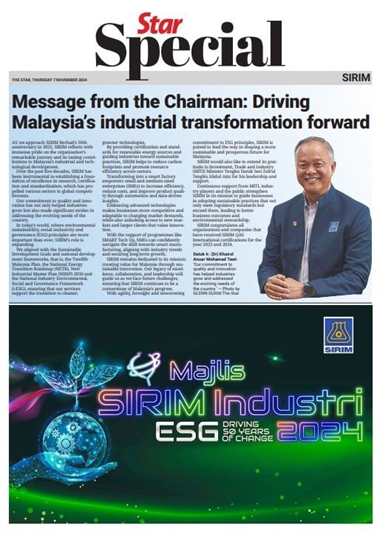
Toyota chairman Akio Toyoda bows in apology at a news conference in Tokyo on June 3. - Bloomberg
TOKYO: The unfurling testing scandal that has embroiled five Japanese automotive giants, including the world’s largest carmaker Toyota, is inexcusable from the lens of governance and compliance, but it also reflects outmoded certification practices dating to 1951, analysts said.
The controversy, involving the mishandling of tests to obtain the government’s certification, erupted on June 3.
By June 10, Industry Ministry officers had raided all five companies involved, which also comprised household names Honda, Mazda and Suzuki, along with motorcycle maker Yamaha.
After irregularities were uncovered in December 2023 and January 2024 at Toyota subsidiaries Daihatsu and Toyota Industries, the government ordered 85 domestic vehicle and equipment makers to look into processes since 2014.
Of these, 70 firms had submitted their findings, with the five companies citing actions deviating from regulations.
Many of these irregularities were based on in-house tests conducted during production and are said to be at stricter conditions than required, with retesting at government standards not done, given time pressures and the sheer number and complexity of items. The companies were also said to have “different interpretations” of the national certification system.
Still, this was done with the knowledge that the vehicles are safe to drive and that the key issue of safety was never woefully compromised. No problems have yet been found in the deviating testing processes for the 38 affected vehicle models, of which 32 are no longer in production.
There have been zero recalls thus far, and none of the affected models have been deemed unsafe. However, shipments of the six models still on the market have been halted, in line with standard operating procedure.
Tellingly in the Daihatsu scandal, where corners were also cut in testing, the affected models eventually passed retests with flying colours and are now back on sale in showrooms.
All this begs the question of whether Japan may be overzealous in its regulations, although this has, through decades, helped to build up the reputation of quality and safety associated with the “Made In Japan” label.
Fitch Ratings Japan industry analyst and senior director Satoru Aoyama told The Straits Times that the antiquated processes have proven to be both stifling to innovation – hence Japan’s struggles to keep up in the electric vehicles and autonomous vehicles race – and unrealistic, given pressures on the factory floor to meet quotas.
“The non-compliance is a serious issue and cannot be justified,” he stressed. “But at the same time, the certification process has never really been updated to reflect the evolution of the automotive industry, and has become a bottleneck in product development.”
Bloomberg News, in a commentary calling the scandal a “nothingburger”, pointed to how Honda did noise tests using a heavier weight in the vehicle than the one specified. Toyota used collision data that simulated pedestrian impact at a 65-degree angle, rather than the required 50 degrees, though the tested 65 degrees resulted in greater damage.
Toyota chairman Akio Toyoda told a June 3 news conference of the “disconnect” between the reality faced on the production line and regulatory standards, and argued in mitigation that conditions were becoming increasingly unrealistic.
“I don’t think it’s possible to eliminate irregularities altogether,” he said, referring to the current regulations, but added that he hoped to work with the government to refresh existing protocols.
Mazda president Masahiro Moro stressed that there was no malicious intent, adding: “Our certification team’s workload was increasing and they were asking for improved processes and more certification lead time.”
Still, the controversy has been met with an uproar as domestic media branded it a “day of reckoning” and a “stain” on the industry that could damage Japan’s credibility.
The Yomiuri newspaper reported on June 11 that the Transport Ministry believes the discrepancies could be in breach of United Nations standards that have been adopted by 62 regions, even as the five implicated companies stressed that certain tests were conducted under stricter conditions than mandated.
While Toyota remains by far Japan’s most valuable company, nearly three trillion yen (S$25.8 billion) of its market value has been wiped out since the scandal erupted on June 3.
“This controversy is limited to the companies’ certification by Japanese authorities, and their certifications outside Japan remain unaffected at this time,” Mr Dean Enjo, vice-president and senior analyst at Moody’s Ratings, told ST.
While he does not expect any significant impact on overseas sales, he warned: “Should these governance issues persist, they could eventually tarnish Japanese automakers’ reputation and lead to negative consequences on a global scale.”
Top corporate governance lawyer Shin Ushijima agrees.
He told ST that even if the certification process was “overly strict and complex and outdated”, such misconduct would clearly undermine trust that has accumulated over decades.
Better corporate governance can be achieved, he said, if more independent and external directors can be appointed to company boards.
Toyota will hold its annual shareholders meeting on June 18, and two American proxy firms have urged investors to vote against Toyoda’s reappointment as chairman, citing “insufficient independent representation”.
Dr Parissa Haghirian, a professor of international management at Sophia University in Tokyo, said the ongoing controversy exposes the limits of Japan’s hitherto meticulous approach.
As it is, compliance issues have repeatedly and frequently cropped up in Japan across various sectors.
“Criticising existing processes, especially those developed by seniors or more experienced members, is not considered virtuous,” she said.
“This attitude and strong reliance on established processes make it difficult to update methods, respond swiftly to crises, and adapt to new environments.”
Going forward, the government will decide if it should mete out administrative punishment on the five companies. Shipments will resume only after confirming that the affected models meet safety and environment standards.
But Fitch Ratings’ Aoyama felt that more must be done.
“The worst-case scenario is that the government only penalises the companies and leaves it as that,” he said.
“What will be best is if this triggers a fundamental review of the entire certification process and sparks a paradigm shift in the automotive sector.” - The Straits Times/ANN









































